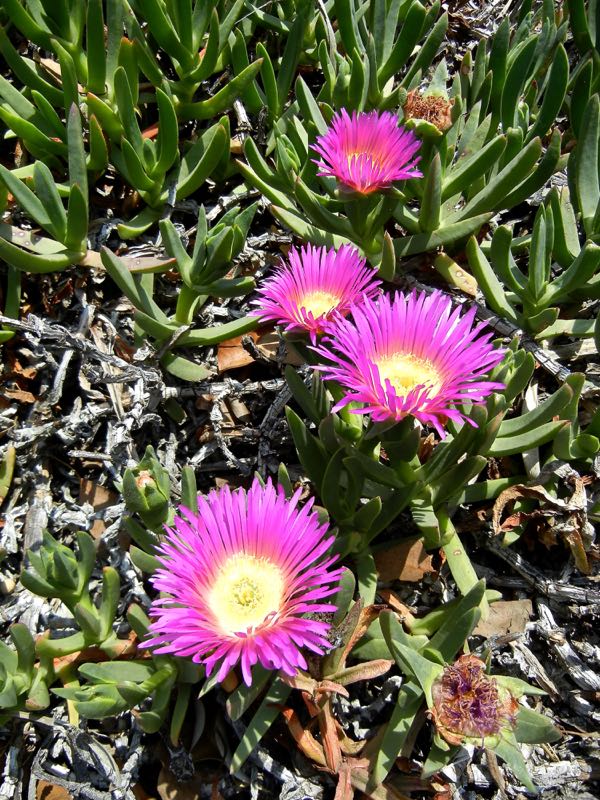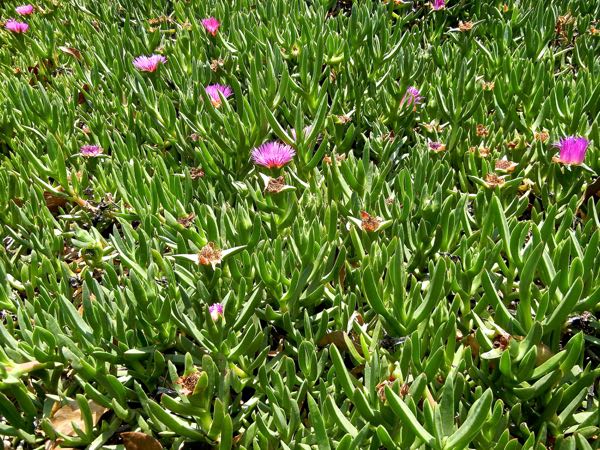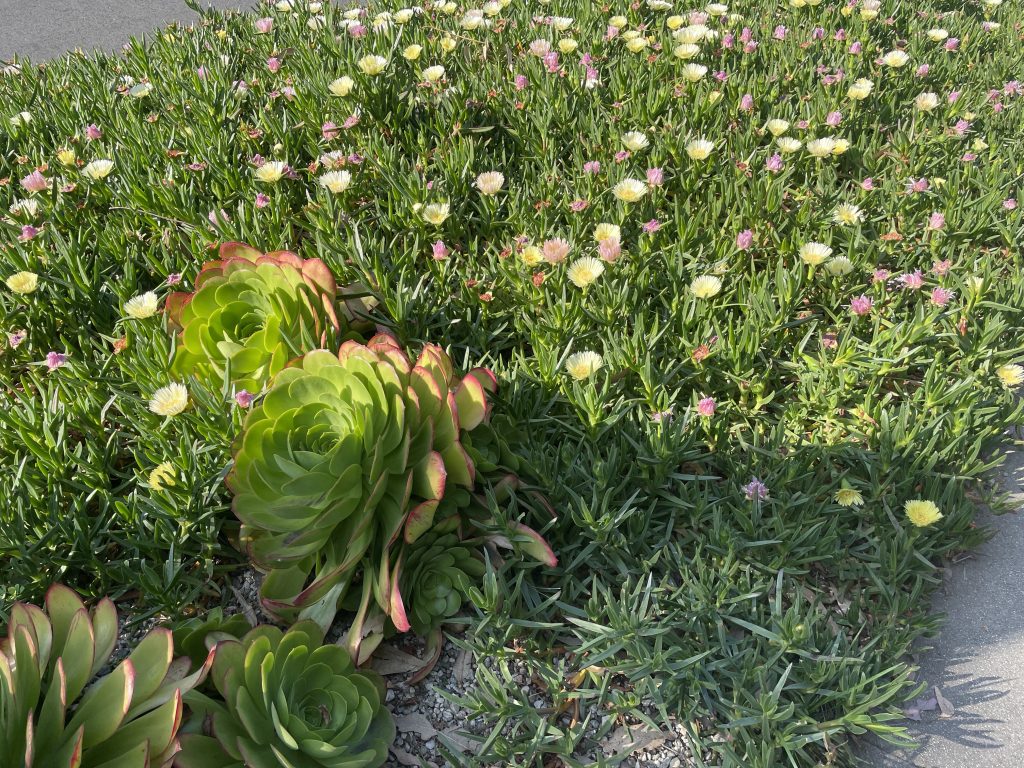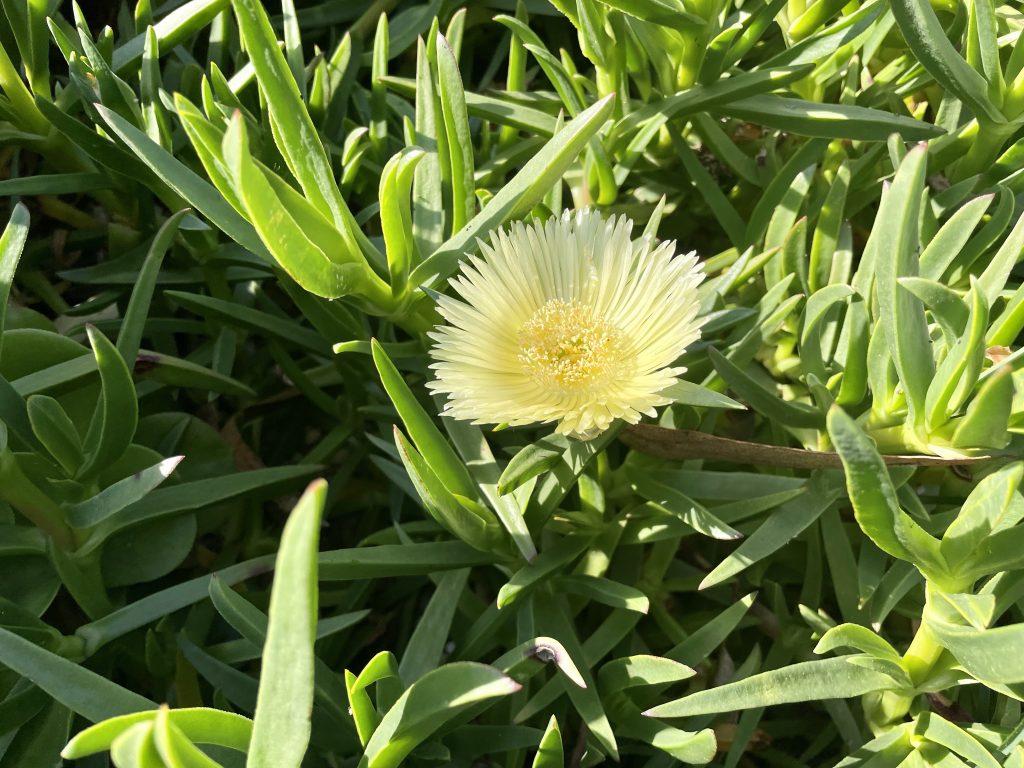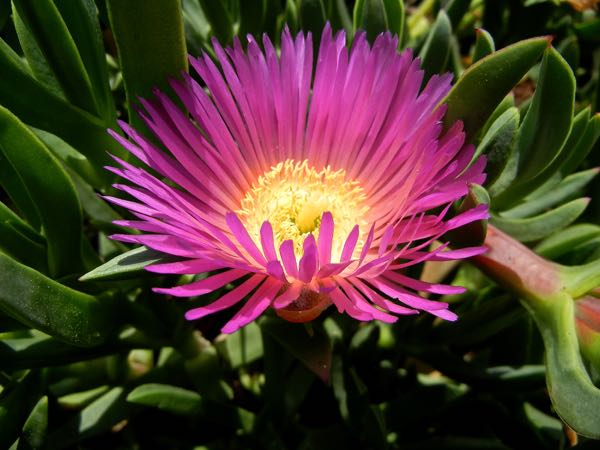Carpobrotus edulis, known by various names such as Ice Plant, Hottentot-fig, Highway Ice Plant, or Pigface, is a succulent ground cover native to South Africa, where it is commonly referred to as Suurvy or Sour Fig. Formerly classified as Mesembryanthemum and named Mesembryanthemum edule, it belongs to the Aizoaceae family of plants. While it can be easily mistaken for other plants within the same genus, Carpobrotus edulis stands out due to its relatively large size.
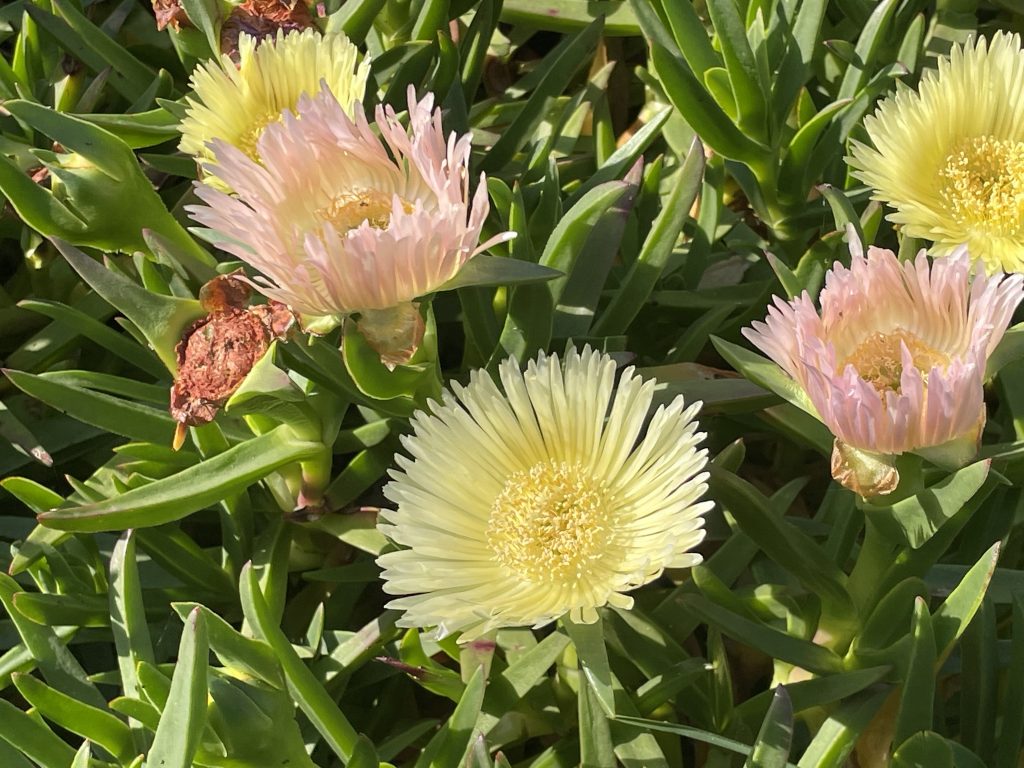
The flowers of Carpobrotus edulis range from 2.5 to 6 inches (6.5cm to 15cm) in diameter and typically exhibit shades of magenta or creamy yellow. The succulent leaves of this plant possess a slight curvature. Bees serve as its primary pollinators, while the leaves are a favored food source for tortoises, and baboons and antelope consume its flowers. Additionally, Carpobrotus edulis provides shelter for snails, lizards, and snakes.
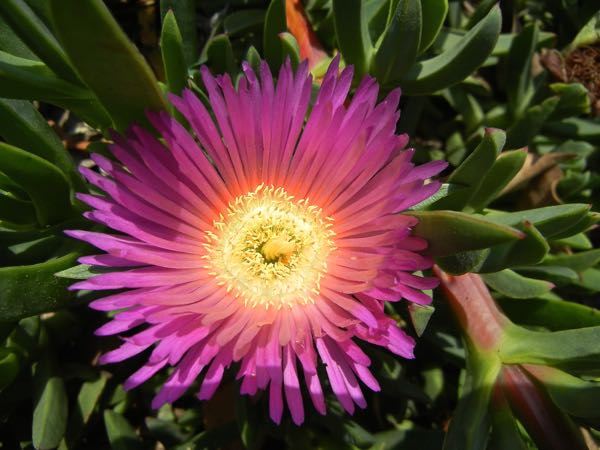
With a growth rate of up to 90cm or 3 feet per year, Carpobrotus edulis predominantly flowers from August to October. Its blossoms open in response to light and close during the night. This species has managed to spread extensively across various regions, particularly coastal areas in California, Australia, and the Mediterranean. The proliferation of Carpobrotus edulis has been aided by black rats, which eat the fruit and disperse the seeds. It can also be easily propagated through seed dispersal.
In California, Carpobrotus edulis is commonly observed along the coastline and alongside freeways. Given its ability to bloom throughout the year in similar climates, Ice Plants have become a familiar sight in California’s coastal regions.
How to grow Carpobrotus edulis:
If you wish to cultivate Carpobrotus edulis, ensure it is grown in a sunny location with well-drained soil. This evergreen plant exhibits drought tolerance and is resistant to fires due to its water-storing leaves. It belongs to a group of plants, including Lavender, Sage, Agave, Yucca, Aeonium, and Lamb Ear, that are less prone to ignite and can be utilized in fire-prone areas.
